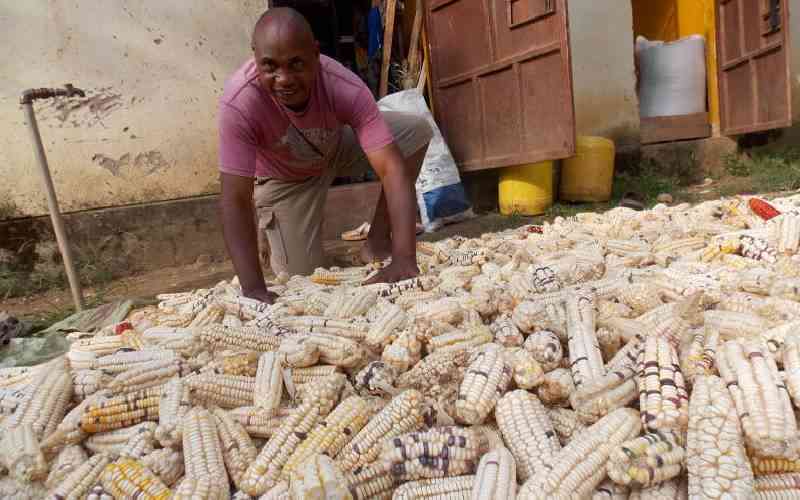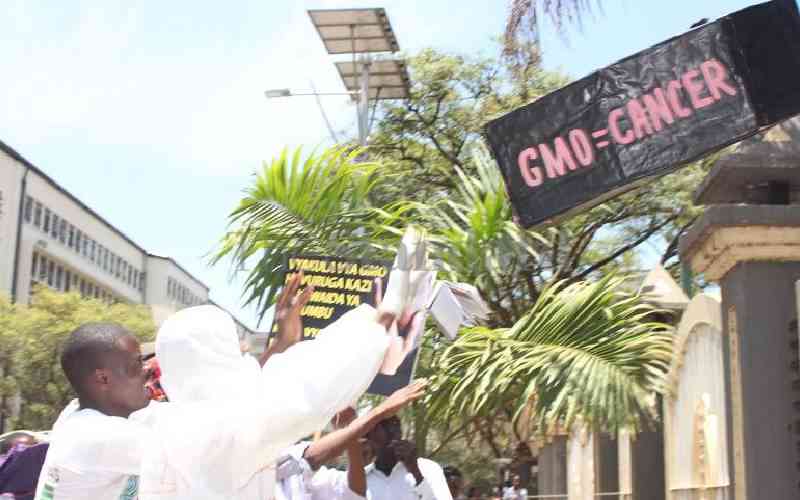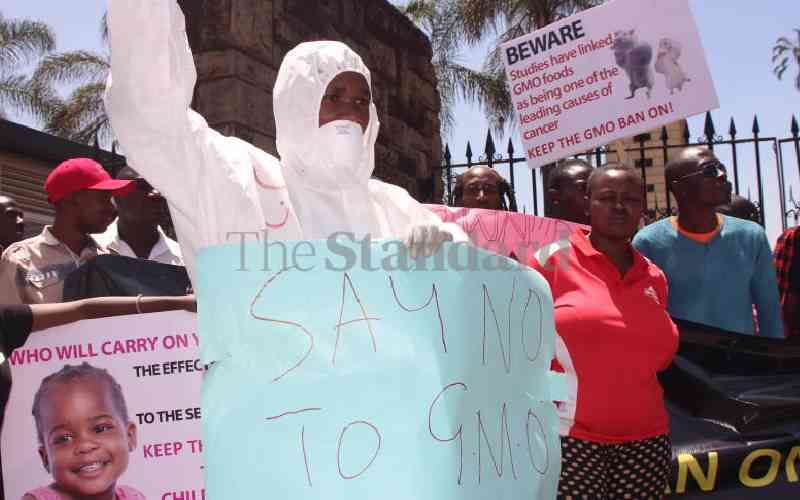Scientists have discovered an interesting development that will help the fight against the lethal maize disease. The maize lethal necrosis disease has been found to remain in the soil after the crop has been harvested and has the ability to pass on the disease to the next maize crop planted in the same field.
In a research paper titled Maize Lethal Necrosis, an emerging threat to maize-based food security in Sub-Saharan Africa, it has been found that upto 70 per cent of the maize seeds planted in soils contaminated with MLN virus were infected with the same.
The research was undertaken by George Mahuku, University of Minnesota, Ohio State University, International Centre of Insect Physiology and Ecology (ICIPE) Kenya Agricultural and Livestock Research Organisation (KARLO) among other players.
The study shows that the disease can remain in the soil for up to 49 days after the maize has been harvested. Hence, any maize replanted in the same field has a high chance of infection because the disease-causing virus will still be in the soil.
This could be one of the reasons why it has become difficult to break the disease cycle in maize growing areas. Farmers doing continuous planting of maize in their shamba have a higher chance of infection than those who break the crop cycle.
Further, farmers need to carefully select any inter-crop or rotation crop that they choose to plant along with maize. In East Africa, apart from corn thrips and other thrips infesting maize, thrips infesting crops such as sukumawiki (kales), cabbage and onions are also capable of transmitting the MLN virus and Maize chlorotic mottle virus. Therefore inter-cropping with these crops can play a role in the spread of the disease to maize. Rotation of maize with these crops can also result in higher densities of vector thrips that can transmit the virus early in the season, as thrips tend to pupate in the soil and can be carried over seasons.
Below are a few measures on how to identify the disease and ways to control it:
How to identify the disease
The MLND disease is caused by a combination of two viruses; the Maize Chlorotic Mottle Virus (MCMV) and the Sugarcane Mosaic Virus (SCMV).
Farmers can identify the disease by looking for the following symptoms:
- In young seedlings of maize, the upper maize leaves start yellowing and later dry up, turning brown from the mid-rib towards the edge of the leaf (leaf margin).
- Later at knee height, the upper leaves appear brown and the stem and the nodes turn brown.
- As the maize matures to cob development stage, it shrinks and does not put any grains.
- In some cases, the maize plant may appear stunted.
How to control the disease
Stay informed. Subscribe to our newsletter
As research into the disease continues, scientists have found new facts about the disease and how farmers can control it.
-Destroy all volunteer maize, weeds or crops in any field where you intend to plant maize, as they may harbour insect pests that can transfer the disease to your new crop.
- Use only certified maize seed. At present, all maize seed in the country has been fortified with systemic pesticides that can aid in early protection of the crop from vectors.
-Adoption of resistant/tolerant cultivars/hybrids under development by KALRO can aid in reducing the disease incidence.
- Early and uniform planting of maize in a maize growing region can prevent the buildup of the disease and its transfer from the old plants to the young ones.
The situation in most growing areas is that farmers plant maize at different times such that there is maize at different stages of growth. When this happens, the disease is easily transmitted from the older crop to the younger maize, which leads to a continuous infection of maize and persistence of the disease in the affected areas and even its spread to new areas.
-Farmers are advised to inspect their crops on a daily basis for signs of the disease. If they notice any of the signs mentioned above, they should uproot the infected maize stalk and bury it to prevent the disease from spreading to the rest of the maize. Spot spraying on these plants with symptoms prior to uprooting can also be helpful.
-Farmers in areas not affected are advised to continue spraying their maize with plant extracts or biopesticides to control pests in growing maize such as stemborers, thrips, aphids and maize beetles which are the main vectors of the disease.
- Ensure that your maize field is clean and free of weeds that act as hosts to insect pests. The pests carry the disease-causing viruses and transfer the disease from plant to plant. Forage grasses such as Napier grown around the maize farms can also be infected with the virus. Hence, careful monitoring of these grasses for symptoms similar to MLN in maize and roughing of infected plants should be undertaken.
-Protection of early stage maize crop with plant extracts or biopesticides or an approved systemic insecticide to control pests in growing maize such as thrips, maize beetles and aphids which are the main vectors of the disease, can help in the disease management.
-Infected maize plants and weeds which are not rotten can be composted as manure or can be used to prepare silage for future as cattle feed. However, rotten parts of maize needs to be completely destroyed as they can cause mycotoxin poisoning to the animals fed on them.
The writer is the editor Organic Farmer that is published by International Centre of Insect Physiology and Ecology (ICIPE)
 The Standard Group Plc is a
multi-media organization with investments in media platforms spanning newspaper
print operations, television, radio broadcasting, digital and online services. The
Standard Group is recognized as a leading multi-media house in Kenya with a key
influence in matters of national and international interest.
The Standard Group Plc is a
multi-media organization with investments in media platforms spanning newspaper
print operations, television, radio broadcasting, digital and online services. The
Standard Group is recognized as a leading multi-media house in Kenya with a key
influence in matters of national and international interest.
 The Standard Group Plc is a
multi-media organization with investments in media platforms spanning newspaper
print operations, television, radio broadcasting, digital and online services. The
Standard Group is recognized as a leading multi-media house in Kenya with a key
influence in matters of national and international interest.
The Standard Group Plc is a
multi-media organization with investments in media platforms spanning newspaper
print operations, television, radio broadcasting, digital and online services. The
Standard Group is recognized as a leading multi-media house in Kenya with a key
influence in matters of national and international interest.








